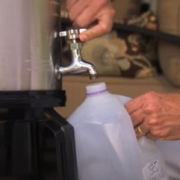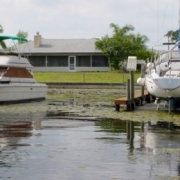The Lower East Coast Water Supply Plan
Excerpt from South Florida Water Management District’s Lower East Coast Water Supply Plan Update 2018, Executive Summary
The South Florida Water Management District’s (SFWMD) strategic goal for its water supply plans is to identify sufficient water supply sources and projects to meet existing and future reasonable-beneficial uses during 1-in-10-year drought conditions while sustaining water resources and related natural systems.
The 2018 Lower East Coast Water Supply Plan (LEC) is the third update to the 2000 Lower East Coast Water Supply Plan, which previously was updated in 2006 and 2013. The LEC Plan is consistent with the water supply planning requirements of Chapter 373, Florida Statutes, and presents population and water demand projections through 2040, a review of water supply issues and evaluations, and a list of water source options. It also examines local and regional water supply efforts completed and describes water resource and water supply development projects -projected to 2040.
The LEC Plan is developed in an open, public forum. Multiple meetings and workshops are held with water users, local governments, utilities, as well as agriculture, industry, and environmental representatives to solicit input, provide information about planning results, and receive comments on draft sections of the plan update.
The LEC Planning Area covers more than 6,500 square miles of southeastern Florida, including all of Palm Beach, Broward, and Miami-Dade counties, most of Monroe County, and portions of eastern Hendry and Collier counties. The LEC Planning Area includes unique and critical ecosystems such as the Everglades, Lake Okeechobee, Florida Bay, Biscayne Bay, and the Loxahatchee River. These ecosystems coexist with large agricultural areas around Lake Okeechobee and in southern Miami-Dade County, and with expansive urban areas housing 30 percent of the state’s population.
Typically, the LEC Planning Area receives abundant rainfall seasonally, with volumes exceeding human and natural system needs during wet periods. Annual precipitation averages 57 inches, with three-quarters of rainfall occurring between May and October. Water availability varies annually with periodic drought years. There is an extensive network of canals and waterworks used for water supply and flood control in the LEC Planning Area. The regional water management system plays a critical role in capturing wet season stormwater for use during dry times, moving water between natural systems, delivering water to agricultural areas and urban coastal communities, and moving excess water to tide to provide flood protection. Fresh groundwater from the surficial aquifer system and surface water from Lake Okeechobee are the primary water sources for urban, agricultural, and industrial uses in the LEC Planning Area.
Climate change and sea level rise are issues of concern, especially in coastal regions such as South Florida. South Florida is particularly vulnerable to potential changes in climate and sea level because of its location, regional variability in climate, hydrology, geology, low topography, natural resources, and dense population in coastal areas. To plan and prepare for regional climate change and sea level rise, the SFWMD is conducting research and computer modeling to better predict and reduce uncertainties, analyzing vulnerabilities in the current water management system, and developing effective adaptation strategies for the future. Coordination with other resource management entities and governments is vital to ensuring a common approach and shared information moving forward.
Successful implementation of the LEC Plan requires close coordination and collaboration with local governments, utilities, agricultural interests, and other stakeholders. This partnering should ensure water resources in the LEC Planning Area are prudently managed and available to meet future demands while also protecting the environment.
The 2018 LEC Plan Update is currently under review and scheduled for completion in 2023. Additional information on the LEC Plan Update can be found at www.sfwmd.gov/our-work/water-supply/lower-east-coast.







